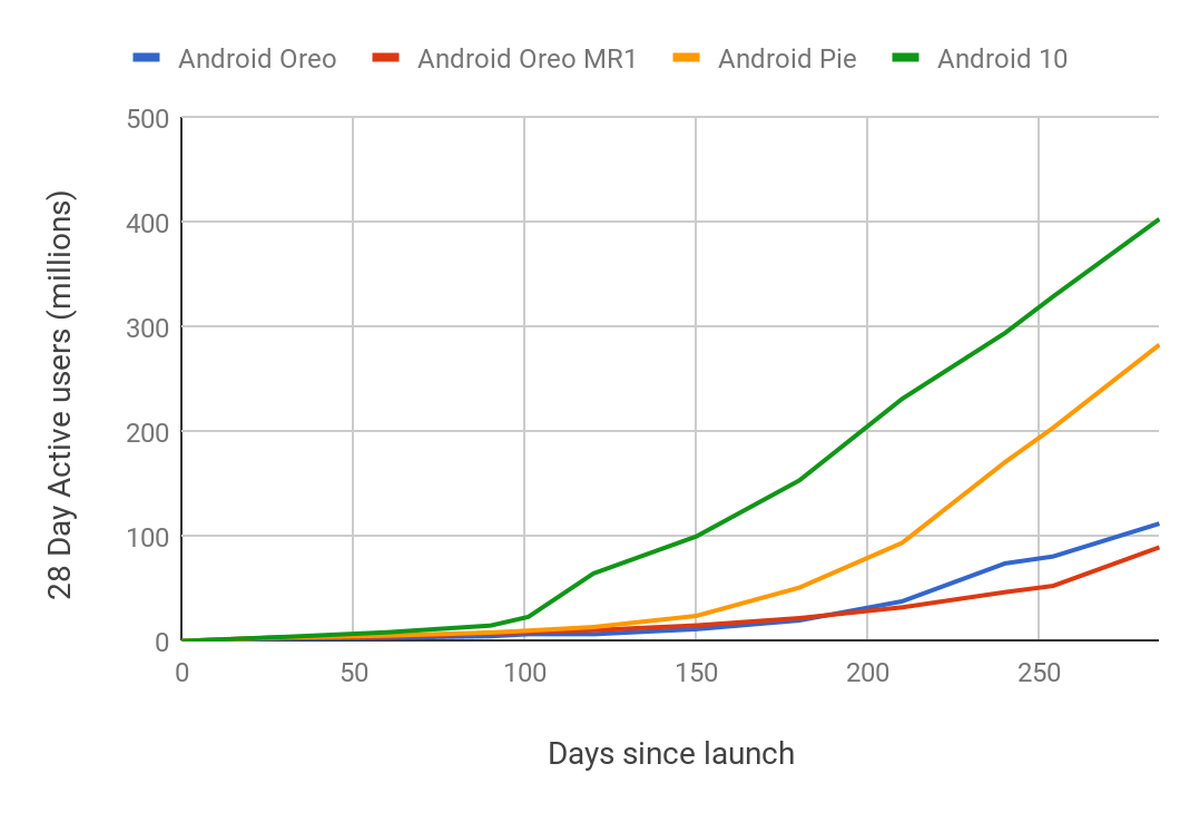Have you ever had a situation where the latest version of Android has been released—alongside all the bells and whistles—and you can’t seem find the update, even months on? This is caused by delays on the part of smartphone manufacturers, who often choose to delay a release as they develop their own UI versions (such as MIUI) to layer over the latest Android OS. This, however, hasn’t been the case with Android 10.
Google has just released a statement on the Android Developers Blog which details “new capabilities” that help to deliver updates in a more timely fashion. Efforts such as Project Mainline and direct OS updates via Google Play have resulted in a significant achievement for Google: Android 10 has the fastest adoption rate compared to any past versions of Android.
100 million devices are running on Android 10, with only five months since the launch of the update—this means that the latest version of Android has been adopted 28 percent quicker than Android 9 (Pie).

It’s worth noting that Google’s graph only takes into account the adoption rate of the new OS. Other metrics such as the ratio of Android 10 devices to Android devices as a whole aren’t mentioned—which will undoubtedly be lower than the 81 percent of iPhones that run on iOS 13.
Still, the improvement is one to be lauded. Google (unlike Apple) have to contend with the complexities that arise as a result of the multitude of brands that manufacture smartphones that run on Android. In contrast, iOS runs exclusively on iPhones, which allows for better optimisation, and better OS support for older iPhones.
Over the last few years or so, Google has also introduced capabilities that push updates “more uniformly, quickly, and efficiently” to Android smartphones and tablets. Besides the aforementioned Project Mainline, the company also introduced Project Treble with Android Oreo, and Generic System Images (GSI) with Android Pie.
And the efforts will continue on with the upcoming Android 11. These will include OEM Developer Previews, more Google Play system updates, and other updates to continue to increase adoption of the latest versions of Android. Besides new features and functionality, new versions of Android also contain important security patches, so this is a significant win for all parties involved—especially end-users.
To find out more, click here for the full report.
[ SOURCE ]








